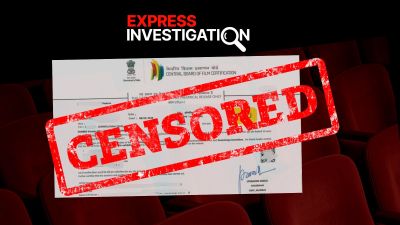Ritu Sarin is Executive Editor (News and Investigations) at The Indian Express group. Her areas of specialisation include internal security, money laundering and corruption. Sarin is one of India’s most renowned reporters and has a career in journalism of over four decades. She is a member of the International Consortium of Investigative Journalists (ICIJ) since 1999 and since early 2023, a member of its Board of Directors. She has also been a founder member of the ICIJ Network Committee (INC). She has, to begin with, alone, and later led teams which have worked on ICIJ’s Offshore Leaks, Swiss Leaks, the Pulitzer Prize winning Panama Papers, Paradise Papers, Implant Files, Fincen Files, Pandora Papers, the Uber Files and Deforestation Inc. She has conducted investigative journalism workshops and addressed investigative journalism conferences with a specialisation on collaborative journalism in several countries. ... Read More
PM’s salary a quiet drop in the record sympathy wave
Before the TV cameras turned towards celebrity donors and before the jostling began outside his office for the small change to be counted, P...

Before the TV cameras turned towards celebrity donors and before the jostling began outside his office for the small change to be counted, Prime Minister Manmohan Singh made one of the first contributions to the Prime Minister’s Relief Fund. He quietly handed in his month’s salary to the fund, adding around Rs 40,000 to the Rs 250 crore corpus.
Ten days later, the flow of funds has become a flood. Besides what’s in the pipeline from government institutions and banks, a whopping Rs 340 crore has been counted so far. The last two days alone, the PMO staff say, contributions totalling Rs 35 crore have been added to the kitty.
“Unprecedented”, “amazing”, say some of the 15-odd PMO staffers who have been called as additional help to the relief cell to help out with accounting and now, disbursement of ex-gratia (Rs 1 lakh each) to the victims of the Tsunami disaster.
To put this money in perspective, it took an entire year to collect Rs 410 crore for the 2001 earthquake in Gujarat. Before that, for the Orissa cyclone in 1998, the PMO received contributions totalling around Rs 125 crore.
How is the money accounted for? Are all the contributions audited? These are some of the questions that many ordinary donors are routinely asking—the reason why it’s important to explain some simple facts about the fund. For instance, beginning by providing medical relief and rehabilitation in early 1950s, the scope of the fund has taken a quantum jump into disaster relief. Second, the thumbrule that the PMO has been applying for utilising this fund is that whatever contributions are received for disasters are received for ex-gratia disbursements and later for funding major rehabilitation packages for the victims of that disaster alone. Meaning, everything that will be collected by the fund for Tsunami victims will be spent exclusively on and for Tsunami victims.
So, even as the PMO began its publicity drive for the Tsunami tragedy, some of its officials were still monitoring the contribution for the last of the 1,300 schools that had been funded by the fund in villages affected by the cyclone in Orissa. Ditto for the several projects of rehabilitation undertaken by the PMO for the earthquake victims in Gujarat.
That Gujarat corpus, therefore, will be left untouched. And will continue to be used in tranches of Rs 2-3 crore per month for the 10,000-odd victims who get the PMO’s help every year to help defray the costs of expensive surgeries, kidney transplants, cancer treatments and so on.
Also, PMO officials say, they have by now devised a clever investment plan by which interest received on the corpus almost sustains the medical assistance provided. ‘‘We do not waste a day in depositing the cheques into banks. The account is audited every year and there is no question of any money left unaccounted for,’’ says a senior official who has been in charge of the fund for several years.
However, given some complaints of ex-gratia and medical relief not reaching the victims in a few cases, even dating back to the mid-1990s, the PMO has this time taken one precaution. All the money being disbursed to the Tsunami victims is being paid by drafts directly into their bank accounts—and not to state governments as was being done earlier.
Photos



- 01
- 02
- 03
- 04
- 05





























